Danfoss SVA-140B Handleiding
Danfoss
Niet gecategoriseerd
SVA-140B
Bekijk gratis de handleiding van Danfoss SVA-140B (4 pagina’s), behorend tot de categorie Niet gecategoriseerd. Deze gids werd als nuttig beoordeeld door 113 mensen en kreeg gemiddeld 4.6 sterren uit 57 reviews. Heb je een vraag over Danfoss SVA-140B of wil je andere gebruikers van dit product iets vragen? Stel een vraag
Pagina 1/4

Installation guide
Shut-off valves
SVA-140B DN 50-100
148R9661
148R9661
© Danfoss | Climate Solutions | 2022.06 AN41292544562101-000101 | 1
Installation / Instalación / Installazione
Valve Size
Max. Nm
Nm máx.
Maks. (Nm)
Max. LB-feet
lb-ft máx.
Max. Lb-piedi
DN 50 - 65 133 +/ -5 98 +/ -3.7
DN 80 84 +/ -5 62 +/ -3.7
DN 100 135 +/ -5 100 +/ -3.7
Maintenance / Wartung / Entretien / Mantenimiento / Manutenzione
1 2 3
4 5
6
7 1098
Ag40 minimum 450 – 700 °C
6
5
3
089
Info for UK customers only : Danfoss Ltd., 22 Wycombe End, HP9 1NB, GB
Імпортер:ТОВ з іі “Данфосс ТОВ” 04080, Київ 80, п/с 168, Україна

© Danfoss | Climate Solutions | 2022.062 | AN41292544562101-000101
ENGLISH
Installation
Refrigerants
Applicable to R744 (CO₂).
The valve is only recommended for use in closed
circuits. For further information please contact
your local Danfoss sales oce.
Pressure and temperature range
SVA-140B (DN 50-100) 140 bar (2030 psi) at
-40 °C
to +150 °C (-40 °F to +302 °F)
Operation
SVA are shut-o valves and must always be either
fully closed or fully open. Half open positions are
not allowed.
Attention!
Valves are balanced and should be operated by
hand and an appropriate sized wrench.
Closing the valve shall be done with a torque not
higher than 40 Nm (DN50/65) 70 Nm (DN80)
and 100 Nm (DN100).
Open the valve max 1 turn until the dierential
pressure is lower than 50 bar, then open fully.
Installation
The valve must be installed with the spindle
vertically upwards or in horizontal position
(g.1).
The valve is designed to withstand a high
internal pressure. However, the piping system
should be designed to avoid liquid traps and
reduce the risk of hydraulic pressure caused by
thermal expansion. It must be ensured that the
valve is protected from pressure transients like
“liquid hammer” in the system.
Recommended ow direction
To achieve optimum ow conditions, the valve
should be installed with the ow towards the
valve cone as indicated by the arrow on the side
of the valve body (g. 2). Flow in the opposite
direction is also acceptable but reduces the
Kv- / Cv value approx. 10%.
Welding
The bonnet should be removed before welding
(g. 3) to prevent damage to the sealing parts in
the packing gland, between the valve body and
bonnet as well as between cone and valve seat.
Be careful not to damage the cone sealing and
make sure the complete bonnet is protected
from dirt and water while removed.
Removing the bonnet can be omitted provided
that: The temperature in the area between the
valve body and bonnet during welding does not
exceed +150 °C /+ 302 °F. This temperature
depends on the welding method as well as on
any cooling of the valve body during the
welding itself. (Cooling can be ensured by, for
example, wrapping a wet cloth around the valve
body.) Make sure that no dirt, welding debris etc.
get into the valve during the welding procedure.
Only materials and welding methods,
compatible with the valve housing material,
must be used. The valve housing must be free
from stresses (external loads) after installation.
The valve should be cleaned internally to
remove welding debris on completion of
welding and before the valve is reassembled.
Avoid welding debris and dirt in the threads of
the housing and the bonnet.
Do NOT remove or service the dark colored
grease between the spindle thread and the
bonnet. In case the grease has been
contaminated with dirt, debris, particles or water
the complete top part must be replaced.
Stop valves must not be mounted in systems
where the outlet side of the valve is open to
atmosphere. The outlet side of the valve must
always be connected to the system or properly
capped o, for example with a welded-on end
plate.
Brazing
When brazing Danfoss recommends using Ag40
minimum 450 – 700 °C ller or better which are
suitable for the working pressure and following
procedure observed:
1. Remove top cover/insert
2. Clean connections with cleaning agent
3. Wrap around wet cloth (Fig. 4)
4. Apply ux on piping ends
5. Apply inert gas internal
6. Heat up piping
7. Braze with recommended brazing material
and within temperature range specied
8. Remove residual ux
Assembly
Remove welding or brazing debris and any dirt
from pipes and valve body before assembly.
Place a at gasket (g. 9) in the valve house
groove and place the complete top into the
valve house. Be careful not to damage the cone
sealing while inserting the complete top.
Tightening
Tighten the bonnet with a torque wrench, to the
values indicated in the table (g. 6). Please note
that the table (g. 6) containing maximum
torque must be adhered to and
never exceeded
.
Colours and identication
The SVA valves are painted with a green oxide
primer in the factory. Precise identication of
the valve is made via the ID ring at the top of the
bonnet, as well as by the stamping on the valve
body. The external surface of the valve housing
must be guarded against corrosion with a
suitable protective coating after installation
and assembly. Protection of the ID ring when
repainting the valve is recommended.
Maintenance
Packing gland
When performing service and maintenance
please observe, that the packing gland shall not
be replaced. Instead, replace the complete top
part, which is available as a spare part.
The packing gland can be tightened with a
wrench by carefully turning it clockwise until
fully tight. Tightening too much will lead to
excessive wear of the packing gland and shorten
the lifetime and will make the spindle movement
tighter.
As a general rule, the packing gland must not be
loosened to make the spindle movement easier,
if there is internal pressure in the valve.
However, if the following precautionary
measures are taken, the packing gland can be
loosened with the valve still under pressure:
Backseating (g. 7)
To backseat the valve, turn the spindle
counterclockwise until the valve is fully open
and tighten with following tightening torques.
Valve Size Lb-ftNm
DN 50/65 25 - 40 19 - 30
DN 80/100 70 - 100 52 - 74
Pressure equalization (g. 8)
In some cases, pressure forms behind the
packing gland. The pressure can be equalized
by slowly loosening the gland.
Dismantling the valve (g. 9)
Do not remove the bonnet while the valve is still
under pressure.
Before servicing the valve, isolate it from the
system. Drain CO₂ e.g. to above 5,2 bara to
prevent large formation of dry ice before
evacuation to zero pressure. Check for refrigerant
pressure before unscrewing and removing the
top cover.
If the at gasket (pos. a) or the cone sealing has
been damaged, it must be replaced.
Check that the spindle is free of scratches and
impact marks.
Replacement of the cone sealing (g. 10)
The cone sealing (b) can be replaced using
Danfoss repair kits.
Unscrew the 3 or 4 cone screws (a) with an allen
key.
The cone sealing can then be removed. Place the
new cone sealing on the cone. Ret with new
cone screws (a) and Nord lock discs.
Valve Size Screw size Lb-ftNm
DN 50/65 M6 12±1 9±1
DN 80/100 M8 29±2 22±2
Replacement of the EPDM backup O-ring
The EPDM backup O-ring can be replaced using
Danfoss repair kit This may be needed every .
second year, when operating constantly close to
the +150 °C temperature limit.
Turn the spindle clockwise and stop when the
black O-ring (c) becomes visible. (fig. 10)
Remove the old O-ring and replace with a new
O-ring applied with grease, to avoid damages to
the O-ring when mounting.
Do NOT remove or service the dark colored
grease between the spindle thread and
the bonnet. In case the grease has been
contaminated with dirt, debris, particles, or
water the complete top part must be replaced.
Assembly
Remove welding debris and any dirt from pipes
and valve body before assembly.
Place a at gasket (g. 9) in the valve house
groove and place the complete top into the
valve house.
Tightening
Tighten the bonnet with a torque wrench, to the
values indicated in the table (g. 6). Please note
that the table (g. 6) containing maximum
torque must be adhered to and never exceeded.
The packing gland can be tightened with a
wrench by carefully turning it clockwise until the
fully tight Tightening too much will lead to .
excessive wear of the packing gland and shorten
the lifetime and will make the spindle movement
tighter.
Charging
Charge CO₂ gas to above 5,2 bara to prevent
large formation of dry ice when charging with
CO₂ liquid or equalizing with sy stem pressure.
Use only original Danfoss parts, including
packing glands, sealing parts and gaskets for
replacement. Materials of new parts are certied
for the relevant refrigerant. In cases of doubt,
please contact Danfoss. Danfoss accepts no
responsibility for errors and omissions. Danfoss
Industrial Refrigeration reserves the right to
make changes to products and specications
without prior notice.
In cases of doubt, please contact your local
Danfoss sales oce.

© Danfoss | Climate Solutions | 2022.06 AN41292544562101-000101 | 3
Product specificaties
| Merk: | Danfoss |
| Categorie: | Niet gecategoriseerd |
| Model: | SVA-140B |
Heb je hulp nodig?
Als je hulp nodig hebt met Danfoss SVA-140B stel dan hieronder een vraag en andere gebruikers zullen je antwoorden
Handleiding Niet gecategoriseerd Danfoss
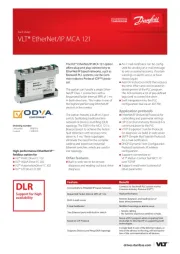
1 September 2025
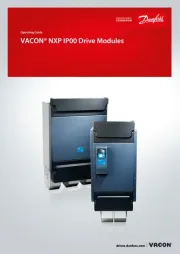
1 September 2025

26 Augustus 2025
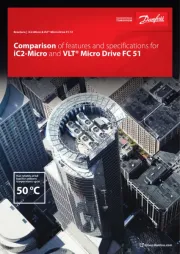
26 Augustus 2025
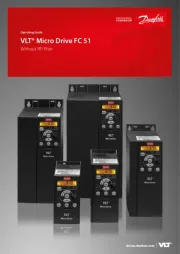
25 Augustus 2025

19 Augustus 2025

18 Augustus 2025
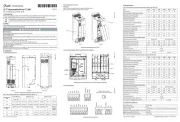
18 Augustus 2025

30 Juli 2025
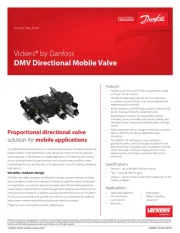
29 Juli 2025
Handleiding Niet gecategoriseerd
- Infento
- JAXY
- Eoslift
- Aluratek
- POGS
- Schwaiger
- QFX
- Mesmed
- Avantone Pro
- Primus WindPower
- Countryman
- Cougar
- Lavex
- Clatronic
- Raclet
Nieuwste handleidingen voor Niet gecategoriseerd
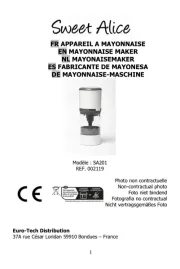
15 September 2025
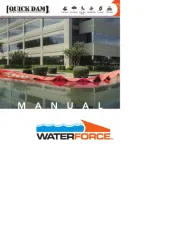
15 September 2025

15 September 2025
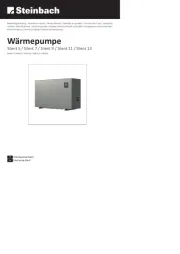
15 September 2025
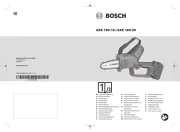
15 September 2025

15 September 2025
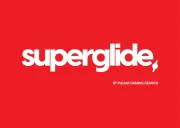
15 September 2025
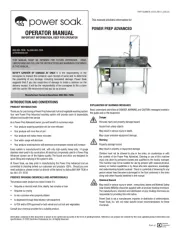
15 September 2025
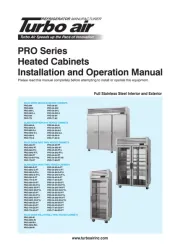
15 September 2025
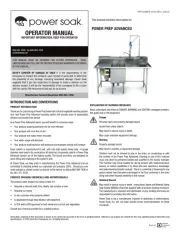
15 September 2025